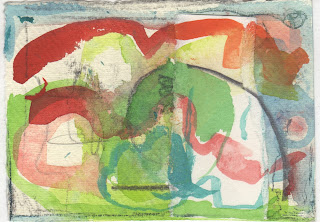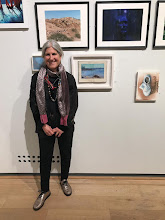I spent yesterday in a light-filled studio at Heatherley's Art School exploring the properties of watercolour, mark making, collage and 'breaking the page' with Jane Lewis.
Jane's paintings have a 'je ne sais quoi' that those of us who know her work find irresistible. As an associate member of the RWS, Jane agreed to teach a workshop to coincide with the members' annual exhibition at Bankside.
I am not a watercolour artist, so it was fabulous to have a day to think differently, to get inside Jane Lewis' head… And Jane was very generous, explaining her process and giving us license to test her approach.
Like Neil Pittaway, Jane added colour in different ways, allowing layers to show through and demonstrated how the paper towel is like the eraser to charcoal, removing, some of what you have just done, leaving a trace.
With Neil I spent my whole time removing and had nothing but a ghost of an idea at the end. This time I was determined to celebrate the colour of my St Petersburg (White Nights) colours. I also brought and used Gouache, something Jane never mixes with her watercolours.
I was particularly interested in what happens when you paint onto a non, or not very absorbent surface. Jane showed us how a piece of Pink Pig paper doesn't absorb the same way 'proper' watercolour paper does, encouraging us to test this ourselves. I had brought paper I had painted with oil paint and gessoed book pages to experiment on.
As I began trying out the watercolours I realised how similar the process felt to my fused plastic. Although usually not involving paint until the end, I felt I wanted to cut up what I had made, to reassemble it even stitch it together. At the end of the session I had time to do that with what I had made and what I had brought.


























